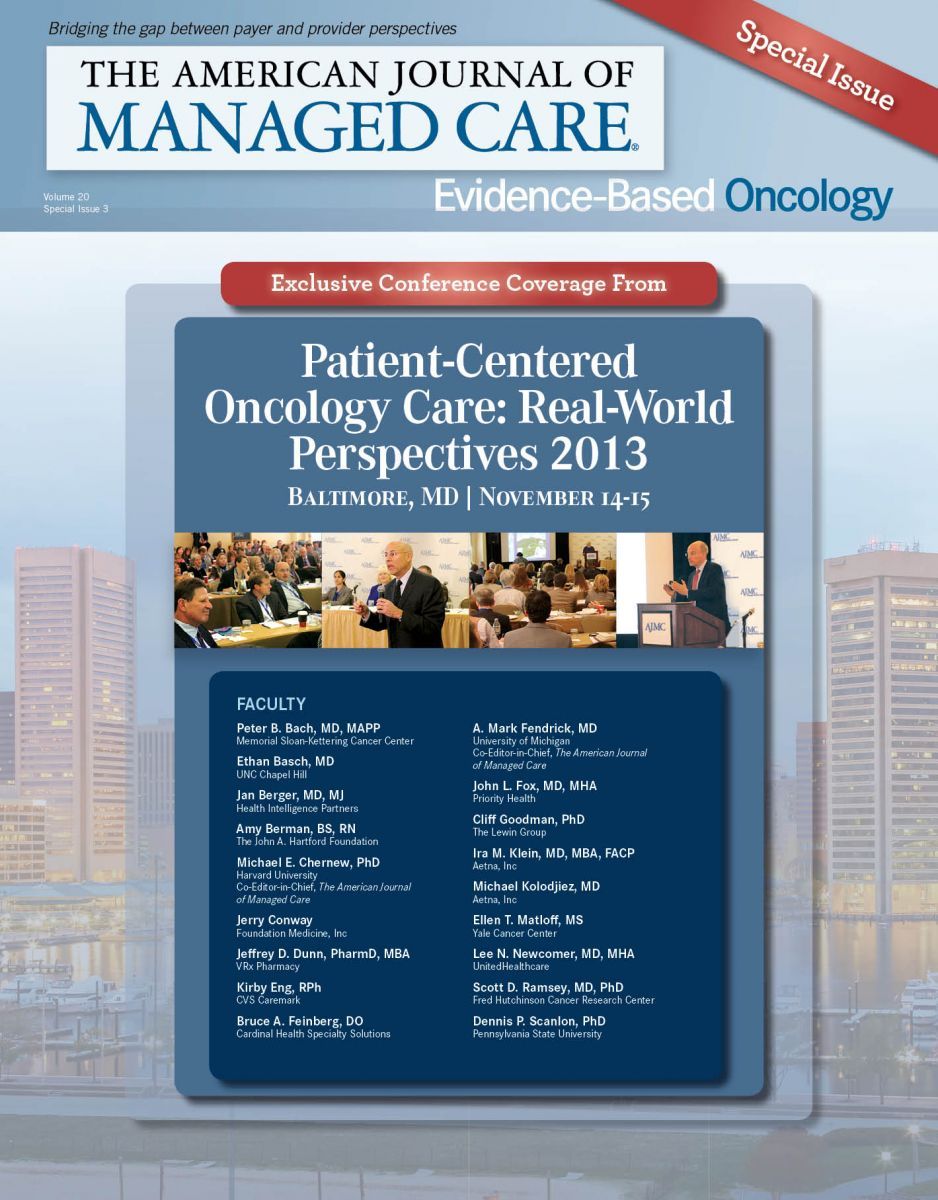Publication
Article
Evidence-Based Oncology
When Making Decisions in Cancer Care, Patients Want to Know: How Will I Feel?
Author(s):
How patients feel during treatment for cancer can have a lot to do with outcomes-and with the cost of care.
How patients feel during treatment for cancer can have a lot to do with outcomes—and with the cost of care. In “Incorporating Patient-Centered Outcomes in Clinical Trials,” Ethan Basch, MD, associate professor and director, Cancer Outcomes Research Program at the University of North Carolina, Chapel Hill, discussed the need for standardization of data, so newly diagnosed patients can learn how treatment has affected other people like them.
Patient-reported outcomes are increasingly being incorporated in clinical trials, and they are finding their way into comparative effectiveness research (CER) as well as clinical practice decision making. “Patients wish to know what the experiences of people like them were in similar contexts previously, either within trial contexts or real-world or non-trial contexts,” said Ethan Basch, MD. Having this information is helpful for estimating the comparative effectiveness among treatments for various stakeholders, including payers.
For example, the American Society of Clinical Oncology (ASCO) guidelines for antiemetics recommended the inclusion of patient-reported nausea in future clinical studies. Although vomiting
is important clinically because of the risk for dehydration, “It turns out that what patients care about is nausea because that’s what they are at home experiencing, and it’s actually much more prevalent and often more severe.”
Clinical trials have a long history of including patient-reported outcomes such as quality of life, symptoms, and functional status. In the context of delivery, however, “We start to think about treatment preferences, shared decision making, effectiveness, understanding of goals of care, and satisfaction.” Patient-reported outcomes should be meaningful and actionable to people
who are making a choice. Researchers should also engage patients throughout the process. According to Basch, before outcomes measures can be developed, qualitative research should be conducted in the target population “to understand the concepts, the experiences, the symptoms, and the other outcomes that are important and meaningful to them, particularly toward making decisions.”
Payers should care about patientreported outcomes because patients’ healthcare utilization is impacted by how they are feeling. “There’s growing evidence to suggest that improving how people feel decreases utilization, particularly office visits, support of medication use, and referrals.” Patient-reported outcomes are also important in the context of cost-utility analyses, he said.
The Center for Medical Technology Policy issued an effectiveness guidance that recommends specific measures be used within oncology. This includes anorexia, anxiety, constipation, depression, diarrhea, dyspnea, fatigue, insomnia, nausea, pain, neuropathy, and vomiting. “These are felt to be important cross-cutting symptoms that should be assessed across trials, not only because they are important to people and will render information that will assist people in making decisions about the best treatment, but because these will also allow us to compare across products in order to understand their comparative impact on the patient experience,” Basch said.
The National Quality Forum is developing a pathway to test patient-reported outcomes in performance measures. ASCO has created a work group to develop patient-reported outcome performance measures that are specific to oncology, including symptoms as well as metrics around shared decision making and decision quality.
Basch noted that, whereas regulators are more interested in very context-specific measurements, payers are looking at PROs in terms of comparative value and reimbursement. Observational and retrospective data are more acceptable to payers than to regulators. “Often times in the regulatory context, unfortunately, this is considered supportive of other data, whereas in the context of
care delivery, this may actually become one of the most important indicators of value.”
Some of the challenges for the future include developing appropriate measures and standardizing them. Also, data gathering, cost, and infrastructure are challenges. “There’s been quite a
bit of movement recently to integrate patient-reported outcomes into electronic health records (EHRs),” he said. “A patient comes in, they self-report on their experience. That information lives on the EHR. It is used for clinical care, it’s aggregated for quality assessment, it’s aggregated for effectiveness research, and ultimately, perhaps even for use in the regulatory context.”
Basch concluded by emphasizing the importance of incorporating the patient perspective in effectiveness research as well as in clinical practice quality assessment. “I would argue that we have
an incomplete picture of the impact of treatments on patients without this information,” he said. “In oncology, our drugs are highly toxic and in the advanced and metastatic setting, our benefits
EBO
can be meager, and I think understanding the impact on how patients feel is an important piece of understanding the value of a product.”


